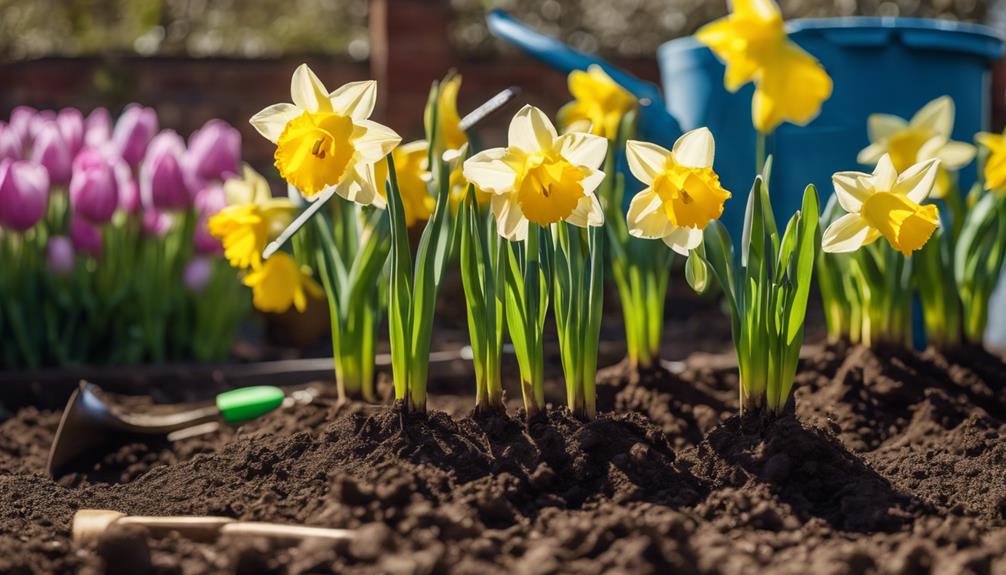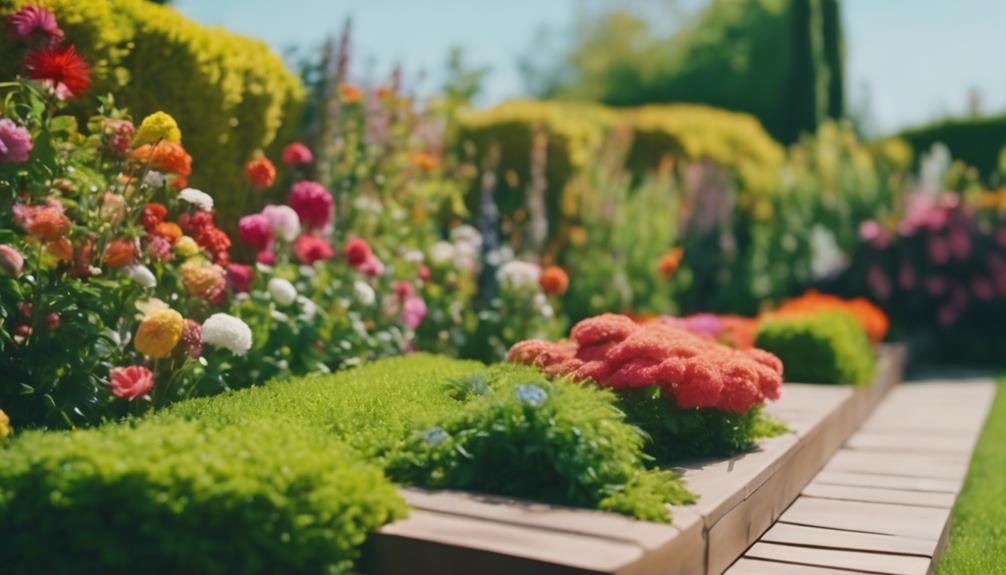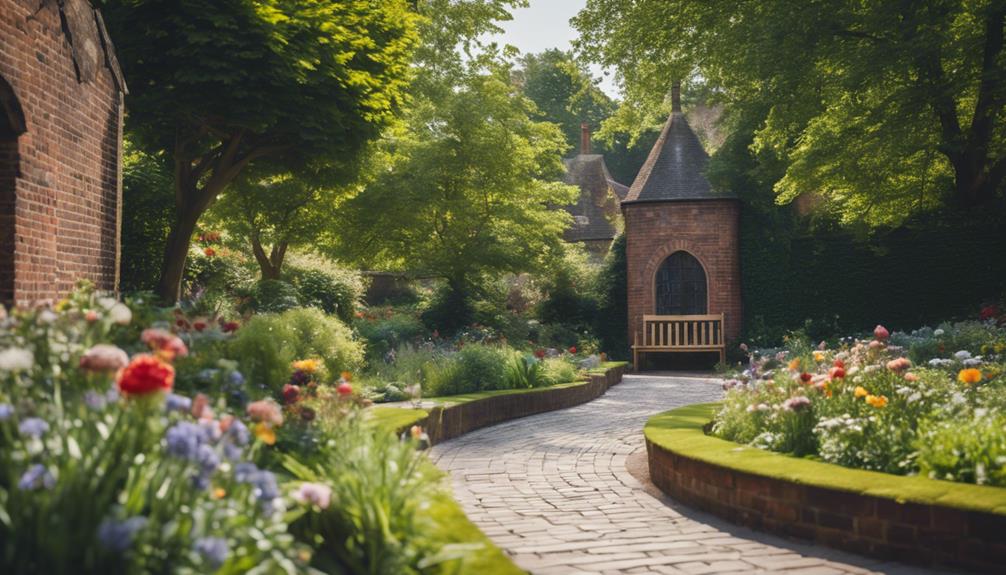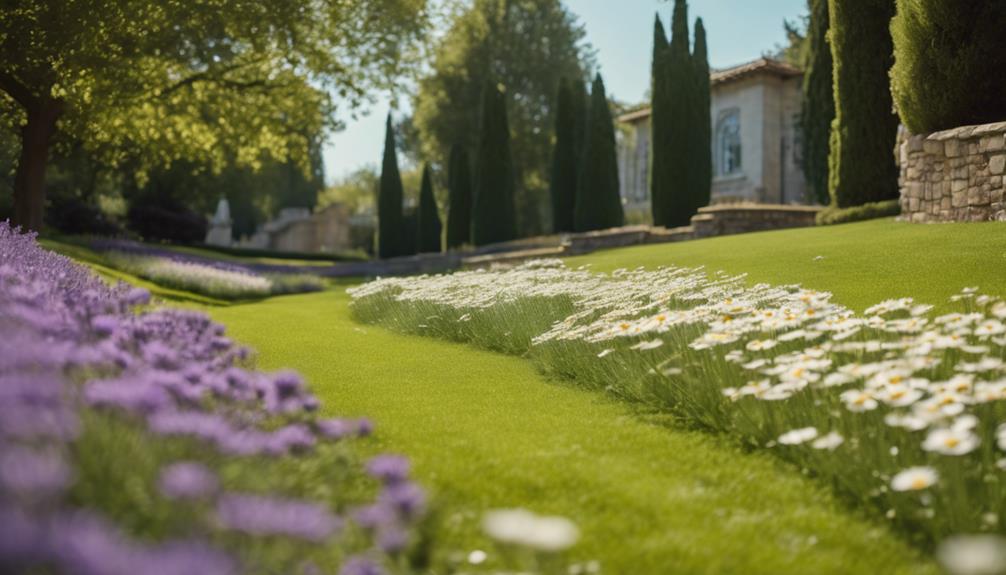
Winter Garden Preparation Selly Oak
27 November 2024
Summer Garden Maintenance Bartley Green
28 November 2024Spring Garden Preparation in Edgbaston: Cultivating Your Green Oasis
As the chill of winter fades away, effective spring garden preparation in Edgbaston becomes essential for creating a vibrant outdoor sanctuary. But where do you start? Don't fret; we've got you covered!
Assessing Soil Health: The Foundation of Your Garden
First things first, take a good look at your soil. Think of it as the bedrock of your garden's success. Grab a soil testing kit (available at most garden centres or online) to check the pH and nutrient levels. Ideally, you want a pH between 6.0 and 7.0 for most plants. If your soil is lacking, consider adding organic matter like compost to enrich it. A healthy soil is like a well-fed child—full of energy and ready to grow!
Clearing Debris and Pruning: Letting the Sunshine In
Next, let's tidy up a bit. Clear away any debris left from autumn—think fallen leaves, twigs, and other garden detritus. Not only does this create a neat appearance, but it also prevents pests from taking up residence. Prune any overgrown branches to allow sunlight to penetrate, ensuring your plants can photosynthesise to their heart's content. Remember, sunlight is like a garden's morning coffee—without it, everything stagnates!
Choosing the Right Plants: Go Native!
When it comes to plant selection, consider opting for native varieties. Plants such as Lavender and Foxgloves are not only beautiful but also hardy against local pests. They're like the superheroes of your garden, requiring less water and care while still putting on a fantastic show. Plus, they attract beneficial insects like bees and butterflies, adding life and movement to your space.
Eco-Friendly Pest Control: A Gentle Approach
Speaking of beneficial insects, let's talk pest control. Instead of reaching for chemical sprays, consider introducing ladybugs or lacewings, which feast on aphids and other garden nuisances. If you must use a pesticide, go for organic options. Products like neem oil can be effective while being kinder to the environment. It's all about nurturing your garden like a delicate ecosystem rather than waging war on it.
Maintenance: Keep the Momentum Going
Regular maintenance is key to a flourishing garden. Establish a routine for watering—early mornings are best to prevent evaporation. And don't forget to add a layer of mulch; it retains moisture, suppresses weeds, and keeps the soil temperature stable. Think of mulch as your garden's comfy blanket, keeping it snug and secure.
Embrace the Journey
By following these foundational steps, you'll lay the groundwork for a thriving landscape. Spring gardening is not just about the end result; it's about the joy of nurturing life and watching it grow. So, roll up your sleeves, grab your gardening gloves, and dive into the adventure.
For more tips or personalised advice, feel free to reach out. Let's create a garden that's the envy of Edgbaston! Happy gardening! ��
Importance of Spring Preparation
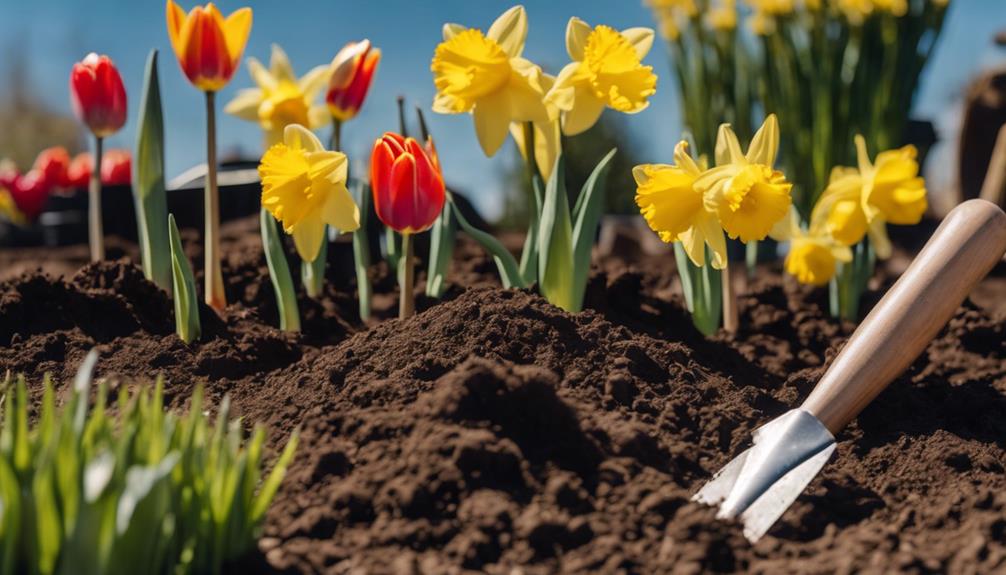
The Essential Guide to Spring Preparation for a Thriving Garden
As winter melts away and spring unfurls its vibrant colours, it's time to roll up your sleeves and get your garden ready for a season of growth and beauty. Proper spring preparation is not just important; it's essential for creating a flourishing garden that will be the envy of your neighbours and a delight for your senses. Let's dig in!
Assessing Soil Health: The Backbone of Your Garden
First things first: your soil is the foundation of your garden. Think of it as the bedrock of a beautiful home; without it, nothing will thrive. Begin with a thorough assessment of your soil health. Grab a soil testing kit (available at most garden centres) and check the pH levels and nutrient content. A balanced mix of nitrogen, phosphorus, and potassium is key to robust plant growth. For example, if your soil is too acidic, you might need to add lime. Conversely, if it's too alkaline, sulphur could do the trick. Tailoring these amendments ensures your plants receive the nourishment they need to flourish.
Clearing the Clutter: A Clean Slate for Growth
Next up, it's time for a bit of spring cleaning. Clearing away debris and dead plant matter isn't just about aesthetics; it's about giving your garden a fighting chance. Twigs, leaves, and old flowers can harbour pests and diseases that can wreak havoc on your budding plants. While you're at it, don't forget to prune any overgrown branches or dead foliage. This allows sunlight to penetrate deeper into your garden, which is crucial for photosynthesis. Just think of it as giving your plants a good haircut—everyone looks better after a trim!
Choosing the Right Plants: Local Heroes
When it comes to plant selection, think local. Choosing plants that are well-suited to your climate not only ensures resilience but also promotes sustainability. Native plants are often more resistant to pests and diseases, making them a wise choice. For instance, if you live in the UK, consider planting Lavender or Foxgloves, both of which thrive in our temperate climate. Plus, they'll attract beneficial insects, adding a splash of colour and life to your garden.
Pest Control: An Ounce of Prevention
Let's not sugar-coat it; pests can be a gardener's worst nightmare. Early-season pest control is essential for preempting infestations. Rather than waiting until your plants are being devoured, take proactive measures. This could involve introducing beneficial insects like ladybirds, or using organic pesticides that are gentle on the environment. It's all about keeping your garden healthy and happy!
The Bigger Picture: Creating a Flourishing Ecosystem
By investing time and effort into these preparatory tasks, you're not just improving plant vitality; you're setting the stage for a thriving ecosystem. Imagine walking through your garden, surrounded by vibrant flowers and lush greenery, hummingbirds flitting about, and a bountiful harvest of home-grown vegetables at your fingertips. It's not just a dream; with the right preparation, it can be your reality.
Get Started Today!
Essential Gardening Tasks
Essential Gardening Tasks for a Thriving Spring Garden
As spring unfolds its vibrant colours, it's the perfect time to roll up your sleeves and dive into some vital gardening tasks. These activities will not only ensure your plants thrive but also create a flourishing garden that's the envy of the neighbourhood.
Control Weeds with Regular Hoeing
With temperatures on the rise, regular hoeing becomes your best friend. It's an essential practice for keeping those pesky weeds at bay. Think of it as giving your garden a tidy haircut—removing the unwanted bits allows your plants to shine. Aim to hoe at least once a week, especially after rain, when the soil is softer and those weeds are easier to uproot.
Mulch to Maintain Soil Moisture
Once you've tackled the weeds, consider mulching your borders. Mulch acts like a protective blanket for your soil, preventing further weed growth and helping to retain moisture. This is particularly important as the weather warms up, ensuring your plants don't suffer from drought stress. Choose organic mulches like wood chips or straw, which will gradually break down and enrich the soil.
Sowing Hardy Vegetables and Perennials
Early spring is prime time for sowing hardy vegetables such as broad beans and carrots. These resilient plants can withstand a bit of chill, making them ideal for planting now. Additionally, it's a fantastic opportunity to plant perennials that will return year after year, bringing a burst of colour to your garden.
Prune Hydrangeas for Healthy Blooms
If you have hydrangeas, March is your moment for a little pruning. This is key to ensuring a bountiful display of blooms. Just remember to keep an eye out for nesting birds—nobody wants to disturb our feathered friends during their breeding season. A gentle approach is always best, so consider waiting a bit longer if you notice any activity.
Support Pollinators by Leaving Some Lawn Uncut
Here's a fun tip: leaving parts of your lawn uncut can encourage the growth of beneficial wildflowers. This not only supports pollinators like bees and butterflies but also adds a charming, natural element to your garden. It's a win-win—your garden looks lovely, and you're helping the local ecosystem thrive.
Plant Potatoes and Onions for a Bountiful Harvest
As the soil warms up, it's time to plant potatoes and onions. These staple crops are relatively easy to grow and can yield a fantastic harvest. If you're feeling adventurous, try planting different varieties of potatoes for a colourful, tasty addition to your meals.
Sow Hardy Annuals for Added Aesthetic Appeal
Don't forget to sprinkle in some hardy annuals like marigolds. These cheerful flowers not only brighten up your garden but also attract pollinators—a true gardener's delight. Plus, they're relatively low maintenance, making them perfect for busy bees.
Get Started Today!
Choosing the Right Plants
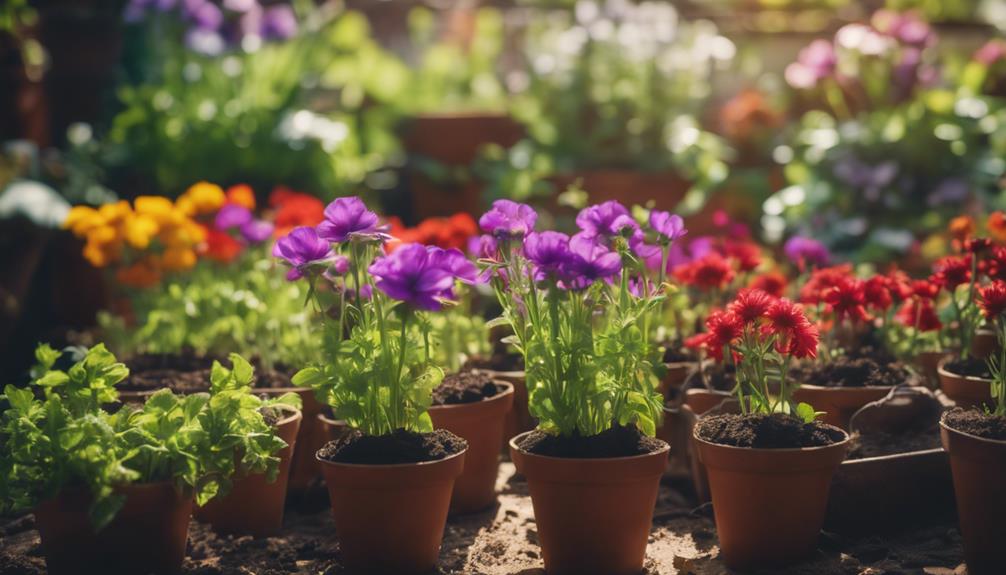
Choosing the Right Plants for Your Spring Garden
Selecting the ideal plants for your spring garden isn't just a task; it's an opportunity to cultivate a colourful and sustainable landscape that thrives throughout the season. Let's dig in, shall we?
Start with Hardy Vegetables
First off, consider hardy vegetables like broad beans, cabbages, and spinach. These sturdy types are quite at home in the crisp conditions of early spring. They're not just tough; they're also delicious! Imagine the satisfaction of plucking fresh spinach leaves for your salad. Now that's what I call a win-win!
Perennials: The Long-Term Investment
When it comes to perennial plants, it's essential to think about their specific soil preferences and mature heights. A little research here can go a long way. Ideally, March and April are your best mates for planting these beauties. Think about incorporating plants like lavender or daylilies; they add colour and fragrance while attracting beneficial insects.
Fruit Trees: A Sweet Addition
Don't forget about fruit trees! Apple and cherry trees not only support our buzzing pollinators but also bring multi-season interest to your garden. Picture this: in spring, you're surrounded by delicate blossoms, and come autumn, you're harvesting juicy fruit. Talk about a garden with benefits!
Bulbs and Annuals for Container Gardening
If you're short on space or simply fancy a bit of flair, bulbs and annuals are your go-to options for container gardening. Marigolds and gladioli are particularly fabulous choices! They're not just pretty faces; they help deter pests too. Plus, who doesn't love a splash of colour on the patio?
Consider Your Personal Touch
Always take into account your personal preferences when it comes to colour and fragrance. After all, your garden should reflect your personality, right? Think about how the plants will interact with each other and the overall layout. It's like hosting a party where everyone gets along!
A Balanced Approach
Eco-Friendly Practices
Cultivating a Greener Tomorrow: Eco-Friendly Gardening Practices
Embracing eco-friendly practices in your garden is not just about making it look pretty; it's a step towards nurturing our planet. By adopting these methods, you create a vibrant outdoor space while playing your part in a sustainable environment.
No-Dig Gardening: A Gentle Touch
First up, let's talk about no-dig gardening. It's as simple as it sounds – by avoiding the shovel, you protect the precious soil structure and all the little critters that call it home. This method promotes a thriving ecosystem beneath your feet, leading to healthier plants above. Think of it as giving your garden a spa day, allowing it to rejuvenate naturally.
Ditching Peat: A Sustainable Choice
Next, consider using peat-free potting compost. Peat extraction contributes to carbon emissions and harms delicate ecosystems. By opting for alternatives like coconut coir or well-rotted compost, you're not just gardening – you're making a statement about sustainability. It's like choosing a reusable bag over a plastic one; small change, big impact!
Mulching Magic: Nature's Blanket
Now, who doesn't love a good mulch? By using organic materials such as wood chips or leaf mould, you're effectively suppressing weeds and locking in moisture. It's like wrapping your plants in a cosy blanket, keeping them snug and happy while also regulating soil temperature. Plus, it looks quite neat, doesn't it?
Attracting Allies: Bird-Friendly Plants
Incorporating bird-friendly plants is another clever trick. These plants invite our feathered friends, who are natural pest controllers. Instead of reaching for harmful pesticides, why not let nature do the work? Imagine a little robin perched nearby, keeping an eye out for pesky aphids while you sip your tea. Now that's a win-win!
Composting: The Circle of Life
Let's not forget about composting. Turning garden waste into nutrient-rich compost is like giving your plants a delicious meal. It reduces waste and promotes a balanced ecosystem. You might even find it satisfying – like turning kitchen scraps into gold. Plus, it's a fantastic way to engage the kids in the garden; who doesn't love a bit of muck?
Companion Planting: A Dynamic Duo
Lastly, explore the art of companion planting. This age-old technique involves pairing plants that benefit each other. For example, did you know that marigolds can deter nematodes? It's like having a trusty sidekick in your gardening adventure!
Ready to Get Started?
Tips for Maintaining Your Garden
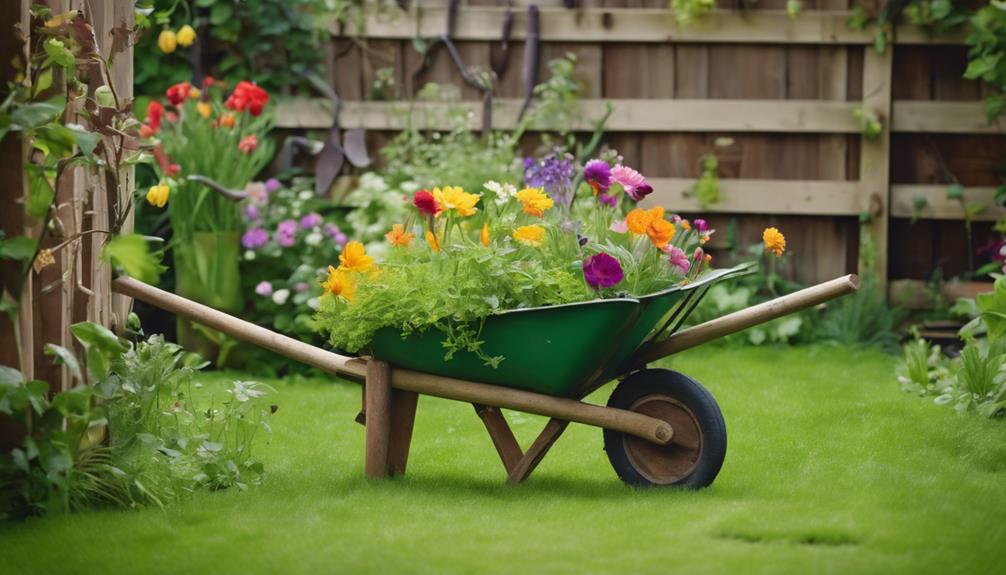
Essential Tips for Maintaining Your Garden
Effective garden maintenance is akin to nurturing a vibrant relationship; it requires attention, care, and a sprinkle of creativity. To ensure your outdoor oasis flourishes, let's dive into some practical tips that will keep your garden looking tip-top.
Establish a Routine
Just as you wouldn't skip your morning cuppa, don't neglect your garden's needs. Regular watering, fertilising, and pruning are your garden's lifeblood. Aim to water early in the morning or late in the evening when temperatures are cooler. This helps reduce evaporation and ensures your plants soak up every drop. A balanced fertiliser, like blood, fish and bone, can do wonders for your soil's nutrient levels. And don't forget to prune! Trimming back overgrown branches not only promotes new growth but also keeps your plants healthy and happy.
Mulch Like a Pro
Think of mulch as a warm blanket for your garden. It retains moisture, suppresses pesky weeds, and maintains a consistent soil temperature. Organic mulches, such as bark or straw, break down over time, enriching the soil. Spread a generous layer around your plants, but avoid piling it against the stems—this can lead to rot.
Seasonal Strategies
The changing seasons bring new tasks that are critical for your garden's vitality. Spring planting is your time to shine—choose a variety of flowers and vegetables that suit your climate. As autumn rolls around, don't be lazy; clear away fallen leaves and debris. This not only keeps your garden neat but also prevents diseases from overwintering.
Keep an Eye on Pests and Diseases
Pest control doesn't have to be a battle. With integrated pest management techniques, you can keep your garden thriving without resorting to harsh chemicals. Encourage beneficial insects, like ladybirds and lacewings, to take up residence. They'll help keep the nasties at bay. Regularly inspect your plants for signs of trouble—early detection is key. If you do need to intervene, consider organic options like neem oil or insecticidal soap.
Nurture Your Soil
Healthy soil is the foundation of a successful garden. Conducting a soil test can provide insights into nutrient levels and pH balance. Based on the results, you can amend your soil with compost or other organic matter, giving your plants the best chance to thrive. Remember, healthy soil equals healthy plants.
Quality Tools Matter
Investing in quality gardening tools can make all the difference. Sharp pruners, sturdy spades, and a reliable hose will save you time and effort. Take care of your tools—clean them regularly and store them properly. A well-maintained tool is like a trusty companion on your gardening journey.
Conclusion: Your Garden Awaits
In summary, maintaining a garden is a delightful blend of routine care and seasonal awareness. By establishing a regular schedule, using mulch, keeping an eye on pests, nurturing your soil, and investing in quality tools, you can cultivate a garden that not only reflects your expertise but also brings joy to your life. So, roll up your sleeves and get started—your garden is waiting for your loving touch!
If you have any questions or need further tips, don't hesitate to reach out! Happy gardening!
Frequently Asked Questions
How Do You Prepare a Garden Bed for Spring?
Preparing Your Garden Bed for Spring: A Step-by-Step Guide
Spring is just around the corner, and that means one thing for garden enthusiasts—it's time to get your hands dirty! Preparing your garden bed for the new season is a vital ritual that sets the stage for healthy plants and bountiful blooms. So, let's dig in!
Clear the Debris
First things first: clear away any debris from your garden bed. This means raking up leaves, twigs, and any remnants of last year's plants. Think of it as spring cleaning for your garden—giving it a fresh start! Not only does this tidy up the area, but it also prevents pests from making a home in your garden. With a clean slate, you're ready to move on to the next step.
Enrich the Soil with Compost
Next, let's talk about soil enrichment. Your plants are going to need a nutrient boost, and compost is your best friend here. It's like a hearty breakfast for your soil! Mixing in well-rotted compost will improve soil structure, enhance drainage, and provide vital nutrients. Aim for a layer about 2 to 4 inches thick, and don't be shy—your plants will thank you for it! If you're unsure where to get good compost, many garden centres offer high-quality options, or you can even make your own at home if you're feeling adventurous.
Aerate and Level the Soil
Once your compost is in place, it's time to aerate and level the soil. This isn't as daunting as it sounds—grab a garden fork and go to town! Aeration involves poking holes into the soil to allow air, water, and nutrients to reach the roots of your plants more effectively. It's a bit like giving your garden a good stretch after a long winter! After aerating, use a rake to level the surface, creating a smooth, inviting canvas for your plants to thrive.
Mulch for Moisture and Weed Control
Now that your garden bed is prepped and primed, it's time to think about mulching. A good layer of mulch—roughly 2 to 3 inches—will help retain moisture in the soil and suppress pesky weeds. Plus, it gives your garden a polished look! Organic mulches, such as bark chips or straw, break down over time, adding even more nutrients to the soil. It's a win-win situation.
The Final Touches
Lastly, don't forget to plan your planting! Consider what fruits, vegetables, or flowers you want to grow this season. Keep in mind the sunlight and space requirements for each plant. A little planning can go a long way in ensuring a flourishing garden. If you're unsure where to start, local nurseries often have guides on companion planting and seasonal crops.
Ready, Set, Grow!
Preparing your garden bed for spring is an essential step towards a successful gardening season. With a bit of effort, you can create an optimal environment for your plants to flourish. So grab your gardening gloves, put on your favourite tunes, and enjoy the process!
If you have any questions or need more tips, feel free to reach out. Happy gardening! ��
When Should I Clear My Garden in Spring Uk?
When to Clear Your Garden in Spring: A UK Guide
As the chill of winter starts to wane, many of us in the UK eagerly anticipate the arrival of spring. It's a time when gardens spring back to life, and you may find yourself itching to get outside. But hold your horses! Before you dive headfirst into clearing your garden, let's chat about the best timing.
The Ideal Timeframe: Late Winter to Early Spring
The sweet spot for garden clearing is generally from February to March. This timeframe is crucial for a couple of reasons. First, it helps to prevent the spread of diseases that can lurk in the debris left over from winter. Think of it as giving your plants a clean slate to start anew! Second, clearing your garden during this period creates a perfect environment for new growth. We all want our gardens to flourish, right?
What to Clear
So, what exactly should you be focusing on? Well, start by removing dead leaves, wilted plants, and any weeds that have bravely decided to poke through the frost. This is also a great moment to clear away any old plant supports or broken pots that might be cluttering up your garden.
And, while you're at it, consider trimming back any perennials that have taken a beating over the winter. Not only will this tidy things up, but it will also encourage healthy growth as the warmer weather sets in.
Tools of the Trade
You might be wondering what tools to have on hand for this task. A good pair of gardening gloves is a must—nobody wants to wrestle with thorns or prickly brambles bare-handed! A sturdy pair of secateurs will help you tackle those stubborn branches, while a garden fork can be invaluable for turning over soil or breaking up compacted earth. If you're feeling particularly adventurous, a garden rake can help you gather up those leaves in no time.
Getting Started: The Process
Once you're armed with the right tools, it's time to roll up those sleeves and get to work! Start by dedicating a weekend to your garden clearing. Not only will this make the task feel less daunting, but it can also be a lovely way to enjoy the fresh air and sunshine. Maybe even invite a friend over for a bit of camaraderie—after all, many hands make light work!
Conclusion: Let's Get Growing!
Now that you know when and how to clear your garden, it's time to put those plans into action. Your plants will thank you for creating a healthy environment for them to thrive. So, grab your tools, get outside, and let's make this spring the best one yet for our gardens!
If you have any questions or would like more tips, feel free to get in touch! Happy gardening!
How Do You Clean a Garden in the Spring?
Transforming Your Garden into a Blossoming Sanctuary
Spring is upon us, and with it comes the perfect opportunity to breathe new life into your garden. If you've found your outdoor space resembling more of a jungle than a sanctuary, fear not! With a little elbow grease and a bit of know-how, you can turn that cluttered chaos into a vibrant retreat.
Clear Away the Clutter
First things first—debris removal. Grab those gardening gloves and a sturdy bin; it's time to clear away fallen leaves, twigs, and any other remnants from winter's chill. Not only does this create a tidy appearance, but it also prevents pests from nesting in your garden's nooks and crannies. Remember, a clean garden is a happy garden!
Bid Farewell to Weeds
Next up: weeding. Weeds are like those uninvited guests who just won't leave. They compete with your beautiful plants for nutrients and water, so it's essential to remove them before they take over. A hand trowel works wonders, or if you're feeling adventurous, you might try a hoe for larger patches. Just be careful not to uproot your prized flowers in the process!
Aerate Your Soil
Now that your garden is looking spick and span, it's time to give the soil some love. Aerating the soil allows air, water, and nutrients to penetrate deeper, promoting healthier root systems. You can use a garden fork or a mechanical aerator for larger areas. Think of it as giving your soil a refreshing breath of fresh air!
Inspect Your Plants
Before you start planting, take a moment to inspect your plants for pests. Examine the leaves, stems, and soil for any signs of unwelcome critters. If you spot any, don't panic! There are plenty of eco-friendly pest control options available, such as neem oil or insecticidal soap. Keeping your garden healthy is a bit like looking after a pet; regular check-ups can help prevent bigger issues down the line.
Planting New Life
Once you've tidied up and ensured your existing plants are healthy, it's time to think about new growth. Consider planting a mix of flowers, vegetables, and herbs to create a diverse and vibrant space. If you're unsure what to plant, local garden centres often have knowledgeable staff who can guide you based on your climate and soil type.
Let's Get Growing!
Should I Water My Garden in Spring?
The Importance of Watering Your Garden in Spring
Absolutely! Watering your garden during the spring months is essential, especially as the soil begins to warm up after the chill of winter. At this time, plants start to awaken from their dormant state and begin to grow vigorously. To keep your garden thriving, aim to provide 1 to 2 inches of water each week. Of course, you should adjust this amount based on the rainfall in your area; after all, Mother Nature can be quite unpredictable!
Timing is Everything
When it comes to watering, the timing can make a world of difference. Early morning or late evening are the best times to hydrate your plants. This not only reduces evaporation but also allows the water to seep into the soil more effectively, giving your plants the drink they need to flourish. Think of it as serving a nice cup of tea—let it steep long enough for the flavours to develop!
Avoiding Overwatering
While it's important to keep your garden moist, be mindful of overwatering. Too much water can lead to soggy soil, which may cause root rot or other issues that can harm your beloved plants. Keep an eye on the weather and adjust your watering schedule accordingly. A simple moisture meter can help you determine when your garden truly needs a drink.
Engage with Your Garden
Gardening is not just a chore; it's an opportunity to connect with nature. Take a stroll through your garden while you water, and observe how your plants are reacting to the changing climate. Are they thriving? Perhaps they need a little more attention? Your garden is a living entity, and by nurturing it, you're creating a sanctuary for both yourself and the local wildlife.
Incorporating these watering tips into your spring gardening routine will not only promote healthy plant growth but also enhance your overall gardening experience. So grab your watering can or hose, and let's give those plants the love they deserve! If you have any questions or need further advice, don't hesitate to reach out. Happy gardening! ��

